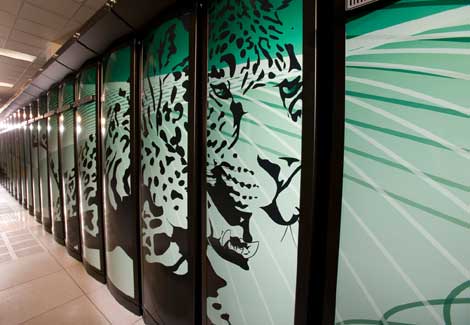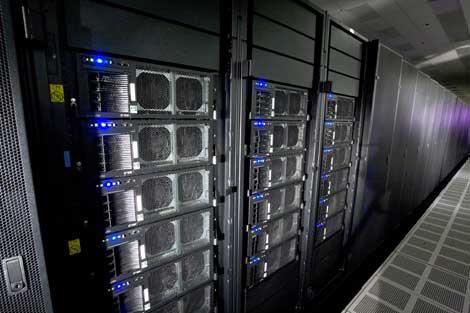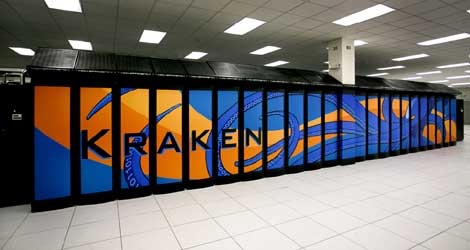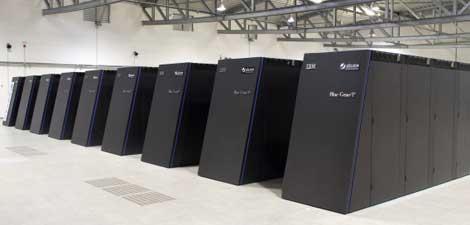Examples of Supercomputers and Their Uses
The Top Five Supercomputers, Illustrated
Nov 19, 2009
Like this story? Get the latest data center news by e-mail or RSS, or follow us on Twitter or Facebook.
The twice-a-year list of the Top 500 supercomputers documents the most powerful systems on the planet. Many of these supercomputers are striking not just for their processing power, but for their design and appearance as well. Here's a look at the top finishers in the latest Top 500 list, which was released Monday, May 31 at the ISC10 conference.
JAGUAR, Oak Ridge National Laboratory

Jaguar is located at the Department of Energy's Oak Ridge Leadership Computing Facility in Tennessee, and retains the top spot in the latest ranking. Jaguar was upgraded last year, helping it post a 1.75 petaflop performance speed running the Linpack benchmark. The upgrade of Jaguar's Cray XT5 from four-core to six-core processors, funded with $19.9 million under the Recovery Act, will enable scientific simulations for exploring solutions to climate change and the development of new energy technologies. Jaguar now uses 37,376 six-core AMD Istanbul processors.
NEBULAE, China
Nebulae, which is located at the newly build National Supercomputing Centre in Shenzhen, China, achieved 1.271 PFlop/s running the Linpack benchmark, which puts it in the No. 2 spot on the TOP500 behind Jaguar. This is the highest rank a Chinese system has ever achieved, topping last year's fifth place showing by the Tianhe-1 system. Nebulae was built from a Dawning TC3600 Blade system with Intel X5650 processors and NVidia Tesla C2050 GPU. Nebulae reports a theoretical peak capability of almost 3 petaflop/s, the highest ever on the TOP500. We don't yet have images of the new system.
ROADRUNNER, Los Alamos National Laboratory

The Roadrunner supercomputer (Credit: LeRoy Sanchez, Wikimedia Commons)
When the Roadrunner system at Los Alamos first appeared at the top of the June 2008 TOP500 list, it was the world's first supercomputer to achieve a top performance of more than 1 petaflop/s (1015 floating point operations per second). This time around, Roadrunner recorded a performance of 1.04 petaflops, dropping from 1.105 petaflop/s in June 2009 due to a repartitioning of the system.
KRAKEN, National Institute for Computational Sciences

The Kraken supercomputer at the University of Tennessee/NICS (Credit: Oak Ridge National Labe, Wikimedia Commons)
Kraken , another upgraded Cray XT5 system at the National Institute for Computational Sciences (NICS), claimed the No. 3 position with a performance of 832 teraflops. Kraken is used to enhance the efficiency of biofuels, develop more effective climate and weather modeling, and analyze disorders that throw the heart out of rhythm. The NICS is a partnership between the University of Tennessee and Oak Ridge National Lab.
JUGENE, Juelich Supercomputing Centre, Germany

The Jugene supercomputer at the Juelich Supercomputing Centre in Germany (Credit: Juelich)
The Jugene supercomputer is housed at the Juelich Supercomputing Centre built on IBM BlueGene/p technology. With its 72,000 processors, Jugene is used for very compute-intensive simulations in materials science, environmental research and particle physics. See Pingdom for additional photos and data on Jugene.
PLEIADES, NASA Ames Research Center

The Pleiades supercomputer at NASA's Ames Research Center. (Photo Credit: David Robertson, NASA Ames Research Center)
Landing in the number 6 position in this year's Top 500 was the Pleiades supercomputer at NASA's Ames Research Center in Mountain View, Calif. Pleiades is an SGI Altix ICE system with 14,080 Intel Xeon quad-core processors. That comes to 56,320 cores in 110 racks, running at 544 teraflops. NASA says Pleiades features the world's largest InfiniBand interconnect network, which requires nearly 24 miles of cabling.
TIANHE-1, China
Dropping from fifth to seventh is theTianhe-1 (meaning River in Sky) system installed at the National Super Computer Center in Tianjin, China and to be used to address research problems in petroleum exploration and the simulation of large aircraft designs. The Tianhe-1 is a hybrid design with Intel Xeon processors and AMD GPUs used as accelerators. Each node consists of two AMD GPUs attached to two Intel Xeon processors. There's no public domain art of Tianhe-1, but you can visit China Defense Mashup to view their photos.
Examples of Supercomputers and Their Uses
Source: https://www.datacenterknowledge.com/the-top-five-supercomputers-illustrated
0 Response to "Examples of Supercomputers and Their Uses"
Post a Comment